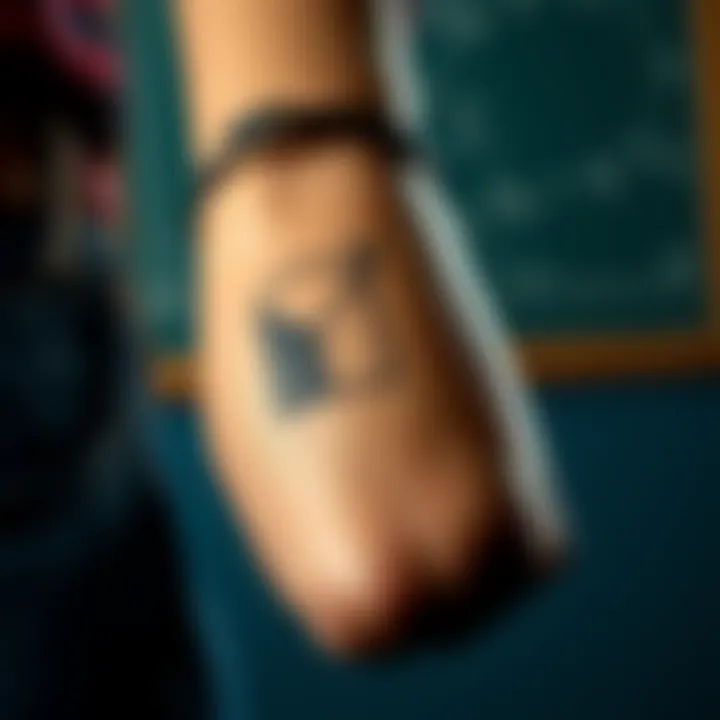Math Teacher's Tattoo Sparks Curiosity | Links to Anime and Alchemical Symbols
Edited By
Clara Reed

A math teacher’s intriguing tattoo has set off conversations among students and people online. The ink, believed to represent alchemical symbols, has sparked questions about its significance, reigniting interest in historical and pop culture references.
Tattoo Origin Causes Buzz
Curiously, the tattoo resembles symbols from the popular anime series, Fullmetal Alchemist. Students expressed delight in discovering the connection, with some noting, "It's a symbol associated with the main character Edward Elric…" as one person explained the tattoo's background.
Some commenters were unaware of the show but quickly found themselves captivated by the alchemical tie-ins. Discussions ranged from anime fandom to historical figures associated with alchemy, like Nicholas Flamel, who was linked to the idea of the philosopher’s stone, a central theme in the anime.
Themes Emerging from Comments
Anime Fandom: Many highlighted the Fullmetal Alchemist connection, showcasing a mix of nostalgia and joy.
Historical References: The symbol's tie to alchemy prompted users to dive deeper into its roots.
Teacher’s Passion: Comments indicated respect for the teacher’s choice, with one remarking, "He's chosen teaching math as a career so that’s a given."
Community Reactions
The tattoo prompted comments like, "Thank you so much for this answer!" reflecting a sense of community learning. Another user added, "Omg you have an awesome math teacher FMA is a total masterpiece." Positive sentiment was prevalent, with most people appreciating the depth of the tattoo's meaning.
"The caduceus is more of an enlightenment symbol It represents the division and union of opposites…"
Key Insights
🌟 Users noted the tattoo as a representation of both alchemical symbols and a nod to pop culture.
🔍 Many said the symbol predates the Fullmetal Alchemist, adding depth to the conversation about its significance.
📚 "It's technically a combination of ouroboros and caduceus with separate meanings." This illustrates the complexities behind what looks like a simple tattoo.
As conversations evolve, the math teacher’s ink reminds people of the intersections between modern culture and ancient practices, revealing how symbols can resonate across generations.
Anticipating the Trend in Tattoos and Culture
There’s a strong chance that the interest in tattoos, especially those that merge historical and pop culture elements, will continue to grow among younger generations. Experts estimate around 60% of students may consider exploring similar tattoo themes, propelled by their fascination with anime and historical tales. This blend of art and meaning reflects a broader trend in how people choose to express identity. Schools might see a rise in discussions around symbolic representation in art classes, further educating curious minds about cultural references that blend academic subjects with pop culture.
A Fresh Lens on Symbolism and Society
This scenario echoes the 18th-century surge in interest around the Enlightenment period, when science and mysticism intertwined, leading to the rise of new philosophies. Much like the way that tattoos now open up conversations about history and culture, Enlightenment thinkers often used symbols to communicate complex ideas about human existence and the universe. As society continues to grapple with identity, it’s possible that future generations may find new ways—perhaps through body art—to convey their understanding of the world, creating a modern dialogue rooted in both the past and personal expression.
